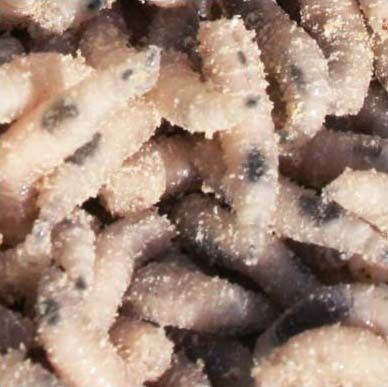Police Identify Badly Charred Corpse Using Maggots on Her Body

It's a cliché at this point: "You are what you eat." But investigators in Mexico were able to use take that trite saying to the extreme when they used the digestive material of maggots to I.D. their feast.
Mexican police found the body in the woods and it was so badly burned that no DNA could be extracted. So, in a first for legal cases, they turned to pathologists at the Independent University of Nuevo León in the city of Monterrey. The team - María de Lourdes Chávez-Briones, Raquel Hernández-Cortés, Porfirio Díaz-Torres, Alberto Niderhauser-García, Jesús Ancer-Rodríguez, Gilberto Jaramillo-Rangel, and Marta Ortega-Martínez - dissected the fly larvae that were feasting on the body, in order to extract the contents of their gastrointestinal system. Using that DNA, the examiners were able to figure out that the body was female.
From there, investigators were able to use a slightly more traditional method. Police suspected that the body belonged to a young woman who had disappeared 10 weeks prior to the discovery of the body, because they had found her graduation ring near the scene of the crime. So police asked the girl's father if he could submit to a paternity test. The test, when matched with the DNA obtained from maggots, revealed that the corpse was his daughter, with a 99.7 percent chance.
Fortunately, it is rare that a body is so thoroughly damaged that the technique needs to be used. But there are other legal instances in which it could still be useful. A maggot found in a car, for example, could inform police whether a particular corpse was transported in that vehicle.
There has been increased interest in using insects as crime-fighting tools. In China last year, maggots were used to establish conclusively that a headless corpse and a nearby head belonged to the same person. Though insects are often ignored at crime scenes, researchers hope that police departments everywhere will begin to realize insects' potential.
The study in Mexico was published in the Journal of Forensic Sciences.
Published by Medicaldaily.com



























